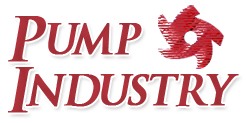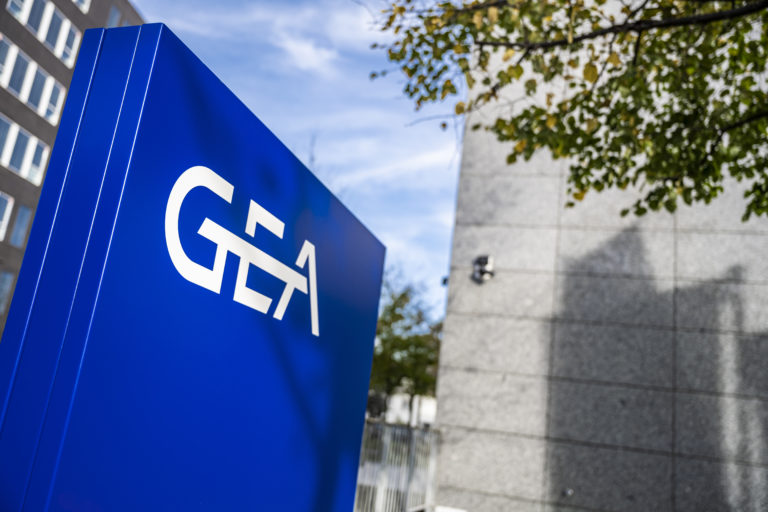Although order intake declined slightly by 1.6 percent to EUR 1.38 billion, it rose by 2.4 percent organically. Revenue increased by a clear 5.6 percent to EUR 1.34 billion and by an even more substantial 9.4 percent organically. All divisions contributed to this development. EBITDA before restructuring expenses rose significantly by 14.4 percent to EUR 191.5 million. The corresponding are confirming our full-year guidance, which we raised in May. We are fully on track to achieve our Mission 26 goals,” says CEO Stefan Klebert. “Looking ahead, I am convinced that sustainability will be a crucial growth driver. Several of our installations for CO2 capture are already successfully in use. We are driving the necessary change in our industries with technology and innovative solutions.”
Order intake and revenue show strong organic growth
At EUR 1,381 million, order intake in the second quarter of 2023 was slightly down by 1.6 percent on the prior-year level of EUR 1,403 million. Organically, growth of 2.4 percent was recorded. The rise in the Liquid & Powder Technologies and Food & Healthcare Technologies divisions did not compensate for the decline in the other divisions. Our customer industries beverage, and notably chemical, showed strong growth.
With regard to large orders (> EUR 15 million), the Liquid & Powder Technologies division secured three significant orders in the months April to June 2023, totaling EUR 81 million. In the prior-year quarter, there were two orders in two divisions worth a total of EUR 52 million.
Revenue rose by 5.6 percent (organic: +9.4 percent) in the reporting period to EUR 1,342 million (Q2 2022: EUR 1,271 million). All divisions contributed to this development. Almost all regions saw an increase in revenue, with a particularly distinct rise of around 21 percent compared with the prior-year quarter in Latin America. Revenue growth was also seen in the majority of customer industries, with the exception of new food, beverage and pharma. The chemical customer industry recorded especially strong growth. In the second quarter of 2023, the share of service revenue increased by 0.9 percentage points to 35.5 percent (Q2 2022: 34.6 percent).
Almost all divisions contribute to significantly improved earnings in second quarter
EBITDA before restructuring expenses increased by a considerable 14.4 percent to EUR 191.5 million (Q2 2022: EUR 167.4 million) thanks to the positive operating performance. The corresponding EBITDA margin rose again to 14.3 percent compared with 13.2 percent in the prior-year quarter. All divisions, with the exception of Food & Healthcare Technologies, contributed to this improvement.
Profit for the period climbed by 27.5 percent in the second quarter to EUR 97.8 million (Q2 2022: EUR 76.7 million). Accordingly, earnings per share rose from EUR 0.43 to EUR 0.57. At EUR 0.62, earnings per share before restructuring expenses were significantly higher than the prior-year figure of EUR 0.53.
Net liquidity decreased compared with the prior-year quarter. As of June 30, 2023, net liquidity – including lease liabilities – amounted to EUR 65.1 million (June 30, 2022: EUR 263.7 million). The largest cash outflow was mainly attributable to the payment for the second tranche of the share buyback program, which amounted to EUR 170.0 million. Further cash outflows related to the dividend payout of EUR 163.7 million and the higher net working capital. As a proportion of revenue, net working capital stood at 8.5 percent and thus was up on the prior-year figure of 7.9 percent.
Return on capital employed (ROCE) increased markedly from 29.7 percent to 33.8 percent. All divisions, with the exception of Food & Healthcare Technologies, recorded improved ROCE.
First half of 2023 at a glance
Despite thedifficult economicenvironment, GEA increased its order intakeby 0.5 percent (organic: +3.2 percent) to EUR 2,962 millionin the first six months of the current fiscal year(previous year: EUR 2,947 million). Revenueroseby 9.0 percent (organic: +11.5 percent) in the first half of the year to EUR 2,613 million. The service business accounted for 36.0 percent of total revenue (previous year: 35.4 percent). EBITDA before restructuring expenses increased by a substantial 18.8 percent to EUR 363.3 million in the reporting period (previous year: EUR 305.7 million). The corresponding EBITDA margin improvedagainby 1.1 percentage points to 13.9 percent (previous year: 12.8 percent). Profit for the periodagainimproved by 20.5 percent to EUR 179.5 million in the first half of the year (previous year: EUR 148.9 million).Accordingly, earnings per shareagainincreased significantly by EUR 0.20 to EUR 1.04.
Outlook for 2023 fiscal year confirmed
GEA has confirmed its forecast forfiscalyear 2023, which was raised in May.Revenue is expected to grow on an organic basis by more than 8.0 percent.EBITDA before restructuring expenses at constant exchange rates isanticipatedto be at the upper end of a range between EUR 730 million and790 million. At the same time, GEA aims to further increase the EBITDA margin before restructuring expenses to at least 14.0 percent. GEA expects ROCE to be more than 32.0 percent.This applies in each caseat constant exchange rates.
GEA aims for independent SBTi validation of its steps toward net zero by 2040
Sustainability is crucial to GEA’s long-term success and therefore a key lever of the Mission 26 strategy. By 2030, Scope 1 and 2 greenhouse gas emissions are to be cut by 60 percent and Scope 3 greenhouse gas emissions by 18 percent compared with the base year 2019. These interim targets were validated by the globally recognized Science Based Targets initiative (SBTi) in 2021.
GEA has set its sights on reducing its greenhouse gas emissions to net zero by 2040 at every link in the value chain (Scope 1 to 3). The company now also aims to have the steps on its path to achieving net zero independently validated; confirmation from SBTi is expected in the first quarter of 2024.
Add Better portfolio expanded to include water-saving GEA solutions, among others
Launched in June 2023, the TÜV Rheinland-validated Add Better label helps customers reduce their emissions. The label highlights all GEA solutions – from industrial machines and processes to digital solutions and entire plants – that are now significantly more resource-efficient than their predecessors. Add Better provides customers with a detailed overview of the improvements made and how the solution can help them enhance their environmental performance.
In the past few weeks, the Add Better portfolio was expanded to include various solutions that notably help to conserve water. These solutions include the GEA Centrifuge Water Saving Unit, which recirculates the cooling water in separators, thereby reducing cooling water consumption by 99.9 percent compared with conventional cooling. This results in annual savings of more than 1.3 million liters of water per separator. Separators of this kind are used in the dairy industry to produce cream and whey, as well as in the beverage industry. Another example is the GEA ECOSpin2 Zero, which is used for wet sterilization in the process of filling PET bottles. As a new machine, this aseptic filling bloc consumes 91 percent less water than the previous model. Following a service upgrade, a previously installed machine can achieve 83 percent water savings. TÜV Rheinland also validated GEA E-Switch Bake, a retrofit system for gas tunnel ovens in bakeries. By switching from gas to electricity, energy consumption is reduced by 14 percent compared to the previous solution, which also reduces emissions.
“The most effective way to reduce overall emissions and protect the environment is to make machinery, equipment and components more efficient for our customers. We are therefore delighted that TÜV validated additional GEA solutions which save water as well as energy,” adds Chief Sustainability Officer Dr. Nadine Sterley.



